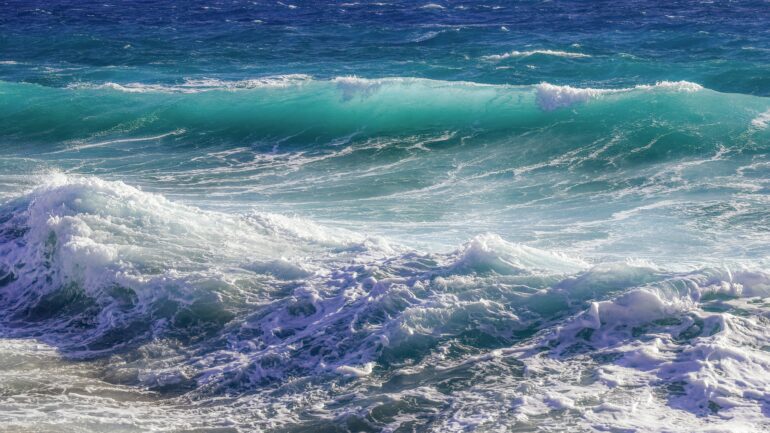TL;DR:
- Dr. Spencer Jones, along with a research team, employs satellite data and machine learning to predict vertical motion in oceans.
- Innovative method translates satellite data on sea surface heights, providing insights into ocean currents, heat distribution, and climate change.
- SWOT satellite, launched in December 2022, captures sea surface heights with unprecedented precision.
- Machine learning model distinguishes vertical motion near the ocean surface, overcoming challenges posed by waves.
- Research aims to understand water movement from the surface to 150 meters deep, impacting oxygen, carbon dioxide, and marine life.
- Potential implications for mitigating global warming by dissolving carbon dioxide in the ocean are being explored.
Main AI News:
In a groundbreaking endeavor, Dr. Spencer Jones, an assistant professor in the Department of Oceanography at Texas A&M University, is part of a dynamic research team poised to revolutionize our understanding of ocean dynamics. Leveraging satellite data and harnessing the power of machine learning, their work promises to unlock crucial insights into surface water movement and its far-reaching implications for our planet’s climate.
The journey into unraveling the mysteries of our oceans begins with a novel method that deciphers satellite data on sea surface heights. This innovative approach not only sheds light on ocean currents and heat distribution but also holds the key to understanding the profound consequences of climate change. Dr. Jones, along with his collaborators, has embarked on a mission of paramount importance, made possible through the generous support of the National Aeronautics and Space Administration (NASA) and a collaborative effort with the French space agency, Centre National d’Études.
At the heart of this pioneering research is the Surface Water and Ocean Topography (SWOT) satellite, which, since its launch in December 2022, has been capturing sea surface heights with unparalleled precision. Dr. Jones, alongside Dr. K. Shafer Smith and graduate student Qiyu Xiao from the Courant Institute of Mathematical Sciences at New York University, as well as Dr. Dhruv Balwada from the Lamont-Doherty Earth Observatory at Columbia University, has trained a machine learning model to discern vertical motions near the ocean surface, employing images of sea surface height.
The model’s remarkable success lies in its ability to distinguish vital details amidst the undulating sea waves. Dr. Jones highlights the challenge of identifying changes in sea-surface heights caused by fronts or swirling eddies, where water moves vertically. “Machine learning is essential to pinpoint the areas where vertical transport occurs,” he emphasizes.
Currently, the SWOT Science Team is diligently validating recent satellite measurements, with plans to release this valuable data to the public in the near future. Their primary objective is to fathom the intricate movement of water from the surface to approximately 150 meters deep, akin to half the height of the Empire State Building. Dr. Jones firmly believes that such insights hold the key to comprehending the Earth’s climate system.
As Dr. Jones explains, “Ocean surface water plays a pivotal role, absorbing oxygen, carbon dioxide, and essential nutrients from various sources, including dust. Understanding the up-and-down movement of water from the surface to deeper layers is pivotal in gauging the dissolved oxygen levels in the ocean, which directly influence marine life.” Fish, in particular, prefer areas rich in oxygen, and this research represents the inaugural step toward deciphering how these vital substances move from the surface into the depths of the ocean.
The implications of this research are far-reaching, extending to potential strategies for mitigating global warming. Dr. Jones points out that some proposals involve dissolving carbon dioxide in the ocean to remove it from the atmosphere. However, a major concern is the future release of dissolved carbon dioxide back into the atmosphere. “We are enthusiastic about this innovative model and intend to continue developing new machine learning algorithms,” asserts Dr. Jones. Their ultimate goal is to apply these algorithms to real satellite data, amplifying their capacity to estimate ocean surface movements.
Conclusion:
Dr. Spencer Jones’ pioneering research in ocean dynamics, aided by cutting-edge technology and machine learning, not only deepens our understanding of the ocean but also has far-reaching implications for the market. This research can impact industries related to climate change mitigation, marine biology, and satellite technology, opening up new avenues for innovation and investment. Businesses should closely monitor developments in this field, as it may lead to novel solutions and opportunities in the evolving market landscape.

